This article was co-authored by Marc Kayem, MD. Dr. Marc Kayem is a board certified Otolaryngologist and Facial Plastic Surgeon based in Beverly Hills, California. He practices and specializes in cosmetic services and sleep-related disorders. He received his Doctorate in Medicine from the University of Ottawa, is board certified by the American Board of Otolaryngology, and is a Fellow of the Royal College of Surgeons of Canada.
There are 10 references cited in this article, which can be found at the bottom of the page.
wikiHow marks an article as reader-approved once it receives enough positive feedback. In this case, 95% of readers who voted found the article helpful, earning it our reader-approved status.
This article has been viewed 34,246 times.
Finding a comfortable sleeping position can be a challenge and you may try several positions before you find the one for you.[1] Once you find the ideal position, you may wonder how you can improve it so you get a better night’s sleep. You can make adjustments to sleeping on your side or on your back to help your body ease into sleep. You can also try to improve a sleeping position on your stomach so you wake up well rested and refreshed.
Steps
Making Adjustments to Sleeping on Your Side
-
1Put a pillow between your legs. Sleeping on one side of your body is known to be one of the most comfortable positions and one of the most common. To make this position more comfortable, try putting a pillow between your bent legs. Slide the pillow between your knees and keep the pillow in place as you lay down on your side. This can help to protect your lower back and take the strain off your neck as you sleep.[2]
- If you are pregnant, sleeping on your side is the ideal position. Sleeping on your left side will help increase the blood and nutrients that reach your baby. Putting a pillow between your legs can make sleeping on your side more comfortable when you are pregnant.[3] A pillow under your abdomen may also help to support your back.
-
2Rest your head on a single pillow. Though you may be tempted to stack several pillows under your neck, sleeping with a single pillow under your neck can ensure your neck is not strained when you sleep. Try sleeping with one semi-firm pillow under your head when you sleep on your side. Having a pillow that is too soft or fluffy can make your neck feel unsupported and sore in the morning.[4]
- If you are used to sleeping with two pillows under your head, go for two thin pillows. This will ensure your neck is not too raised when you sleep.
- You can also try using a wedge-shaped pillow to elevate your upper body. This is especially helpful if you suffer from heartburn.[5]
Advertisement -
3Avoid hugging a pillow to your chest when you sleep. Doing this can end up making your lower back curl forward and lead to spinal issues in the future. Try sleeping with a pillow between your knees instead for better back and spinal support.[6]
- If you are pregnant, hugging a pillow to your chest when you sleep can help you feel more comfortable sleeping on your side. You may invest in a full-body pillow that you can fit between your legs and hug to your chest for extra comfort.[7]
Improving a Sleeping Position on Your Back
-
1Slide a pillow under your knees. If you tend to sleep on your back, slide a pillow under your knees to alleviate any lower back tension or pain. It will put less pressure on your lower back. Use a thin pillow and slide it under your knees once you lay down on your back for extra comfort.[8]
- You can also slide a rolled up blanket or towel under your knees if you do not have a spare pillow.
-
2Place a rolled up towel under your lower back. Sometimes, sleeping on your back can lead to lower back pain or soreness in the morning. To support your lower back while you sleep, place a rolled up towel under your lower back before you go to sleep. The rolled up towel should slide right under the slight dip in your lower back when you lay down on your back in bed.[9]
- You can also try sliding a thin flat pillow under your lower back, though this often raises your lower back too high off the bed. The idea is to keep your spine aligned and your back slightly raised, but not raised above your head or chest.
-
3Avoid this position if you snore. Sleeping on your back can cause you to snore or make your snoring worse, as it can make it difficult for you to breathe properly while you sleep. If you tend to snore, you may want to try sleeping on your side instead. Sleeping on your side can help to reduce your snoring or make it less severe.[10]
- If you find it difficult to remain sleeping on your side because you are used to sleeping on your back, try using tennis balls to prevent you from rolling onto your back. Roll the tennis balls in a t-shirt and place them along your back when you are sleeping on your side. This way, if you do start to roll over, the tennis balls will remind you to stay on your side.
-
4Don’t sleep on your back if you are pregnant. Sleeping on your back while you are pregnant can decrease blood flow to your baby, lower your blood pressure, give you a backache, promote hemorrhoids, and even make breathing difficult. Sleep on your side (preferably the left side) if you are pregnant.[11]
Adjusting a Sleeping Position on Your Stomach
-
1Place a pillow under your pelvis and lower abdomen. Sleeping on your stomach can put strain on your joints as well as your lower back. But some people find sleeping on their stomachs the most comfortable position for them. If this is the case, try placing a pillow under your pelvis and lower abdomen. This can help to reduce the strain on your lower back and make this position even more comfy.[12]
- You can also use a rolled up towel or a blanket if you do not have access to a spare pillow.
-
2Have one pillow under your head. To make sleeping on your stomach more comfortable, try sleeping with only one pillow under your head. Doing this can prevent straining on your neck and make this position more relaxing for you while you sleep.[13]
- If it feels uncomfortable to sleep with a pillow under your head when you are on your stomach, you can try sleeping without a pillow. Some people prefer sleeping on their stomach with no pillow on their head and just a pillow under their pelvis and abdomen.
-
3Bend one leg toward your chest when you sleep. This option is a good way to keep your spine straight when you are sleeping on your stomach. Bend your elbow and knee, moving your leg towards your chest. Then, place a pillow underneath your armpit and your hip. This can help protect your spine when you sleep on your stomach.[14]
- Some people find bending their leg towards their chest can put stress on their hip. If this is the case, you may try sleeping one night with your leg bent and one night with your legs straight and relaxed.
-
4Avoid this position if you have poor posture. Sleeping on your stomach can put stress on your back, neck, joints, and muscles. If you have poor posture when you are sitting or standing, sleeping on your stomach may make your posture worse. Try adjusting your sleep position so you are sleeping on your side or your back to help improve your posture.
- It may feel weird to sleep on your back or your side if you are used to sleeping on your stomach at first. Over time, you will likely adapt and get used to sleeping on your side or your back.
Expert Q&A
-
QuestionWhat is the healthiest way to sleep?
 Marc Kayem, MDDr. Marc Kayem is a board certified Otolaryngologist and Facial Plastic Surgeon based in Beverly Hills, California. He practices and specializes in cosmetic services and sleep-related disorders. He received his Doctorate in Medicine from the University of Ottawa, is board certified by the American Board of Otolaryngology, and is a Fellow of the Royal College of Surgeons of Canada.
Marc Kayem, MDDr. Marc Kayem is a board certified Otolaryngologist and Facial Plastic Surgeon based in Beverly Hills, California. He practices and specializes in cosmetic services and sleep-related disorders. He received his Doctorate in Medicine from the University of Ottawa, is board certified by the American Board of Otolaryngology, and is a Fellow of the Royal College of Surgeons of Canada.
Sleep Specialist Some people believe that elevating your head or propping your back up will reduce snoring when you’re sleeping on your back. For the vast majority of people, this won’t have much of an impact on your snoring.
Some people believe that elevating your head or propping your back up will reduce snoring when you’re sleeping on your back. For the vast majority of people, this won’t have much of an impact on your snoring. -
QuestionHow can I relax when I'm in a sleeping position?
 Marc Kayem, MDDr. Marc Kayem is a board certified Otolaryngologist and Facial Plastic Surgeon based in Beverly Hills, California. He practices and specializes in cosmetic services and sleep-related disorders. He received his Doctorate in Medicine from the University of Ottawa, is board certified by the American Board of Otolaryngology, and is a Fellow of the Royal College of Surgeons of Canada.
Marc Kayem, MDDr. Marc Kayem is a board certified Otolaryngologist and Facial Plastic Surgeon based in Beverly Hills, California. He practices and specializes in cosmetic services and sleep-related disorders. He received his Doctorate in Medicine from the University of Ottawa, is board certified by the American Board of Otolaryngology, and is a Fellow of the Royal College of Surgeons of Canada.
Sleep Specialist Meditating before bed is a great way to relax. If you're stressed out, you should be able to use meditation to dissociate all the stressful events of the day. It's also key to avoid stimulants, alcohol, and big meals right before lying down.
Meditating before bed is a great way to relax. If you're stressed out, you should be able to use meditation to dissociate all the stressful events of the day. It's also key to avoid stimulants, alcohol, and big meals right before lying down.
References
- ↑ Marc Kayem, MD. Sleep Specialist. Expert Interview. 24 October 2019.
- ↑ https://www.urmc.rochester.edu/encyclopedia/content.aspx?ContentTypeID=1&ContentID=4460
- ↑ http://americanpregnancy.org/pregnancy-health/sleeping-positions-during-pregnancy/
- ↑ https://www.health.harvard.edu/pain/say-good-night-to-neck-pain
- ↑ https://www.helpguide.org/harvard/medical-causes-of-sleep-problems.htm
- ↑ https://www.victoriavn.com/en/health-library/how-to-improve-your-sleeping-position
- ↑ https://www.sleepfoundation.org/pregnancy
- ↑ http://www.mayoclinic.org/diseases-conditions/back-pain/multimedia/sleeping-positions/sls-20076452?s=2
- ↑ http://www.mayoclinic.org/diseases-conditions/back-pain/multimedia/sleeping-positions/sls-20076452?s=2
- ↑ Marc Kayem, MD. Sleep Specialist. Expert Interview. 24 October 2019.
- ↑ http://americanpregnancy.org/pregnancy-health/sleeping-positions-during-pregnancy/
- ↑ http://www.mayoclinic.org/diseases-conditions/back-pain/multimedia/sleeping-positions/sls-20076452?s=3
- ↑ http://www.mayoclinic.org/diseases-conditions/back-pain/multimedia/sleeping-positions/sls-20076452?s=3
- ↑ http://www.cosmopolitan.com/health-fitness/advice/a30992/youre-sleeping-wrong/

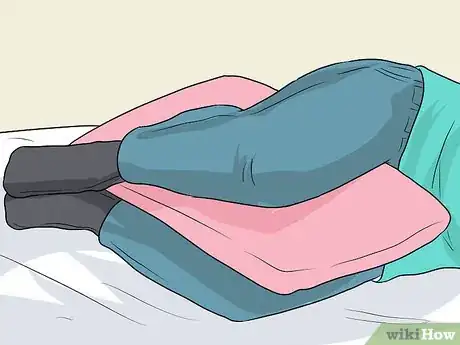
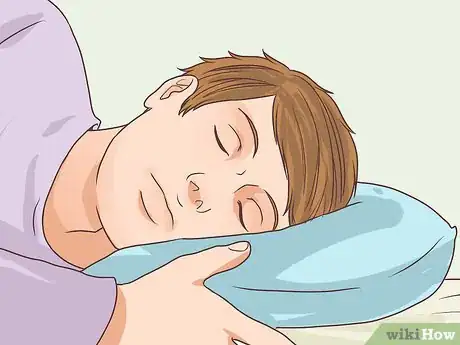

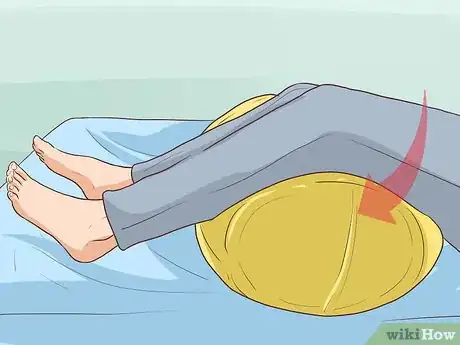
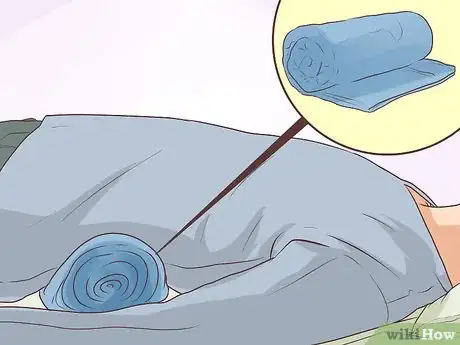
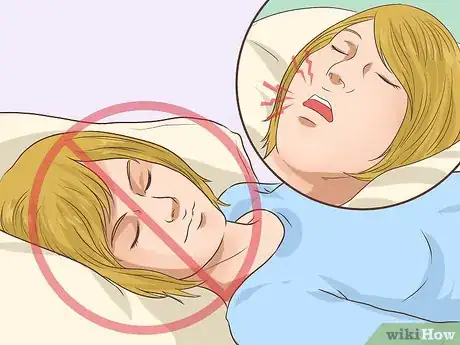

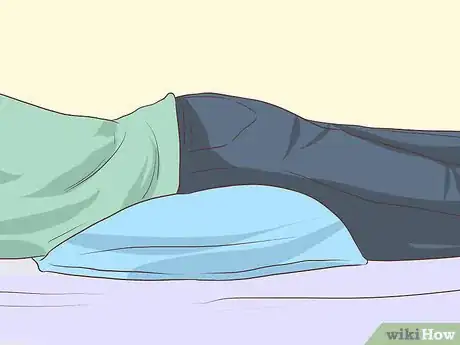

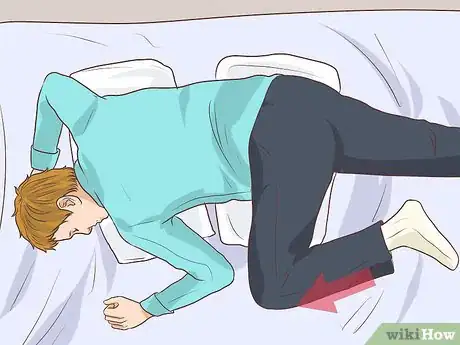
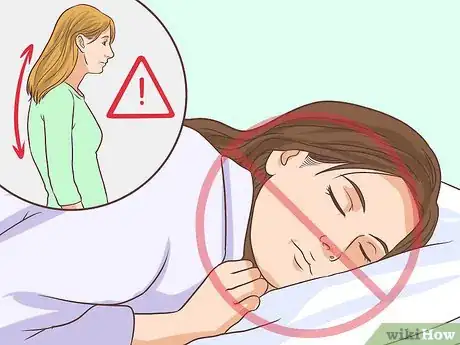




























































Medical Disclaimer
The content of this article is not intended to be a substitute for professional medical advice, examination, diagnosis, or treatment. You should always contact your doctor or other qualified healthcare professional before starting, changing, or stopping any kind of health treatment.
Read More...